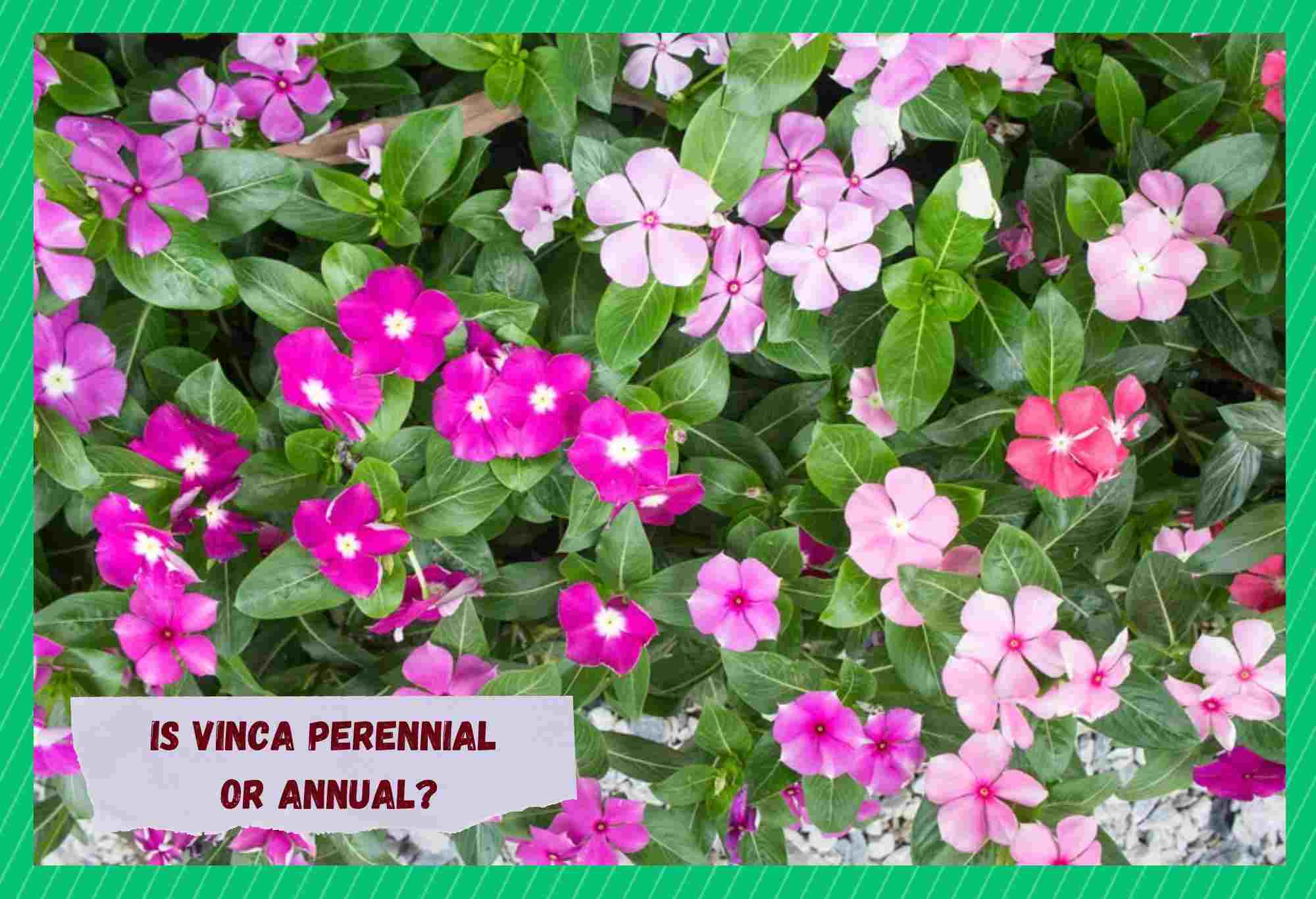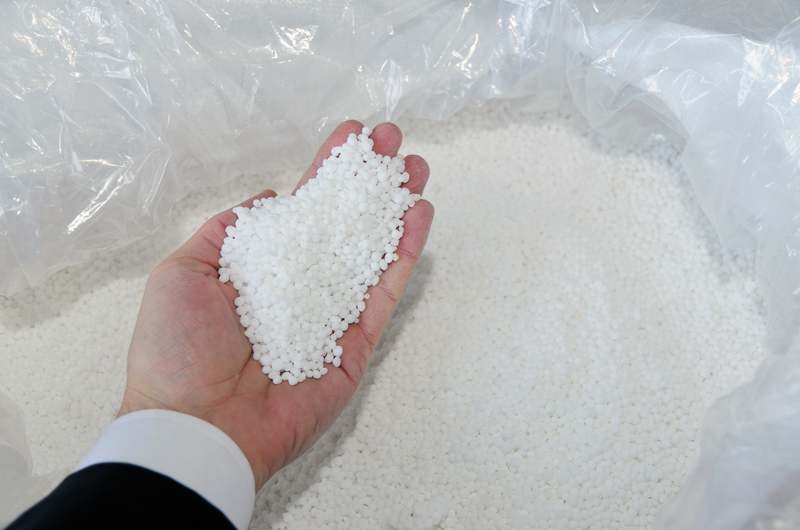
Vinca, commonly known as periwinkle, is a flowering plant from the Apocynaceae family of plants. They are known for their heat and drought-tolerant nature and are grown in containers, garden beds, and baskets.
They offer numerous health benefits and have traditionally been used to make medicines. Throughout history, they have been used to treat several diseases, including diabetes, high blood pressure, sore throat, and many more.
With that out of the way, a gardener needs to know about their plants and their varieties to maintain them better. From their traits to life cycles, there is plenty to learn when it comes to plants. Usually, the life cycles are classified as annual or perennial.
Annual plants are the ones that complete their life cycle within a year and then die, while perennial plants have a life cycle of over two years, and they regrow every spring.
Annual plants are loved for their quick growth and beautiful colors. Although they have a short lifespan, they give an instant facelift to your yard. On the other hand, perennial plants are a preferred choice for many gardeners, thanks to their long life cycles.
So, is vinca perennial or annual? Many gardeners often wonder whether vinca plants are perennial or annual. That would be the premise of this article. Let’s delve deeper without any further ado!
Is Vinca Perennial or Annual?
As it turns out, vinca has both varieties. Let’s discuss both in detail!
Vinca Annual
Catharanthus roseus, also known as vinca annual, is a drought and heat-tolerant plant with dark green and leathery foliage. These plants are usually 6 to 18 inches tall and are often grown in sunny places.
The best thing about vinca annual plants is that they do not require much maintenance. They die after completing their life cycle but can be reseeded with minimal effort.
Even if you forget to water them sometimes, they will still be fine. However, it is recommended to water them regularly for their best growth.
The vinca annual plants endure harsh conditions, but they still look fresh and rich. Their glossy green leaves and red flowers are the reason why they are widely grown all over the world.
Heat Tolerance
Since vinca annual are sun-loving plants, consider planting them at a place that receives ample sunlight. Of course, plants need sunlight for photosynthesis. Therefore, make sure that your vinca annual plants get enough sunlight for their proper growth.
Furthermore, it is advised to space them a few inches apart to avoid overcrowding. If you are a landscaper, you’d know how overcrowding can damage your vinca annual plants.
If they are planted too close to each other, they will have to compete to gain soil nutrients and water. No matter how fertile soil is, the quantity of nutrients is limited.
Nutrient Requirements
Like all other plants, vinca annual plants also need soil nutrients to grow. But since the nutrients are limited, the soil will only provide nutrients to some plants, and the rest of the vinca annual plants will not grow properly.
Apart from that, your vinca annual plants will also have to fight for sunlight in an overcrowded situation. As mentioned above, the vinca annual plants love sunlight, and they must get direct sunlight for at least six hours.
In an overcrowded garden, only a few vinca annual plants will receive enough sunlight. This is because the plants grow taller in this situation, and of course, the taller plants will shade the smaller ones. As a result, only tall ones will survive, and the rest will likely die.
Water Requirements
Once you have planted your vinca annual plants, consider watering them. However, do not overwater them as it can also damage your vinca annual plants.
This is because if you overwater plants, they won’t get enough oxygen. In case you have overwatered them, it would be better to keep them in a shady area for some time.
Since vinca annuals are drought-resistant plants, they will not require frequent watering once they have been established. You will only need to water them once in a while to keep them healthy.
Fertilizer Requirements
Furthermore, it would be better to fertilize them every few months with a water-soluble fertilizer. A fertilizer is a substance containing key nutrients required for optimal plants’ health, such as nitrogen, potassium, and phosphorus.
While nitrogen promotes the leaves of your vinca annual plants, phosphorus benefits the flowers and is vital for photosynthesis. If your vinca annual plants lack these nutrients, you may notice a discoloration in their leaves.
Fertilizers come in different forms. There are liquid fertilizers and granular fertilizers. If you opt for granular fertilizers, don’t just sprinkle them on the soil surface. It is advised to put them at least two to three inches deep into your soil for best performance.
On the other hand, if you choose liquid fertilizer, spray it directly on the leaves of your vinca annual plants. Instructions regarding applying methods are usually given on the package of the fertilizers, so it would be better to go through them first for the best results.
Lastly, make sure that your pets and kids don’t eat the leaves of vinca annual plants as they are toxic. If ingested, consider reaching out to a doctor immediately.
Vinca Perennial
Next, we have the vinca perennial plants. They remain closer to the ground surface and are often called ground huggers. They are smaller in size as compared to vinca annual plants. Usually, they grow six to eight inches tall. They have shiny leaves that remain green the entire year.
Resistance
The vinca perennial plants are rabbit and deer-resistant. Like vinca annual plants, they are poisonous to animals, which is why deer and rabbits do not like them. So, if you are worried about the plants getting eaten by animals in your area, the vinca perennial plants would be a great choice.
Unlike vinca annual plants that love growing in sunny areas, the vinca perennial plants do not like harsh sunlight and are usually grown in partially shady locations. So, if your area has a hot climate, make sure they do not get direct sunlight for long, as it can kill them.
Shade Requirements
It is a good idea to keep the vinca perennial plants under a shaded cloth. This way, they will receive just enough sunlight as these clothes do not block sunlight completely. A variety of shade clothes are available in the market nowadays. Buy one that can block at least 70% of the sunlight.
Make sure to install the shade cloth the right way to protect your vinca perennial plants from sunlight. You can attach it to trees or poles in your garden. If your garden does not have any points to attach the cloth, you can also install a bamboo tree for this purpose.
The vinca perennial plants require moderate watering. Watering them once a week will be enough. The rule of thumb is to check the soil first. If it feels dry, consider watering your vinca perennial plants.
The Bottom Line
Vinca has both perennial and annual varieties. Both have different appearances and traits. While annual plants die after a year, perennials are more permanent and last two years at least.
Both varieties are fairly drought-tolerant and require minimal maintenance. Vinca annuals grow in sunny conditions, whereas vinca perennial plants flourish in shady locations.






what is the classification of the perennial vinca plant.
The annual is Catharanthus roseus.
I want to make sure I get the perenniel plants.